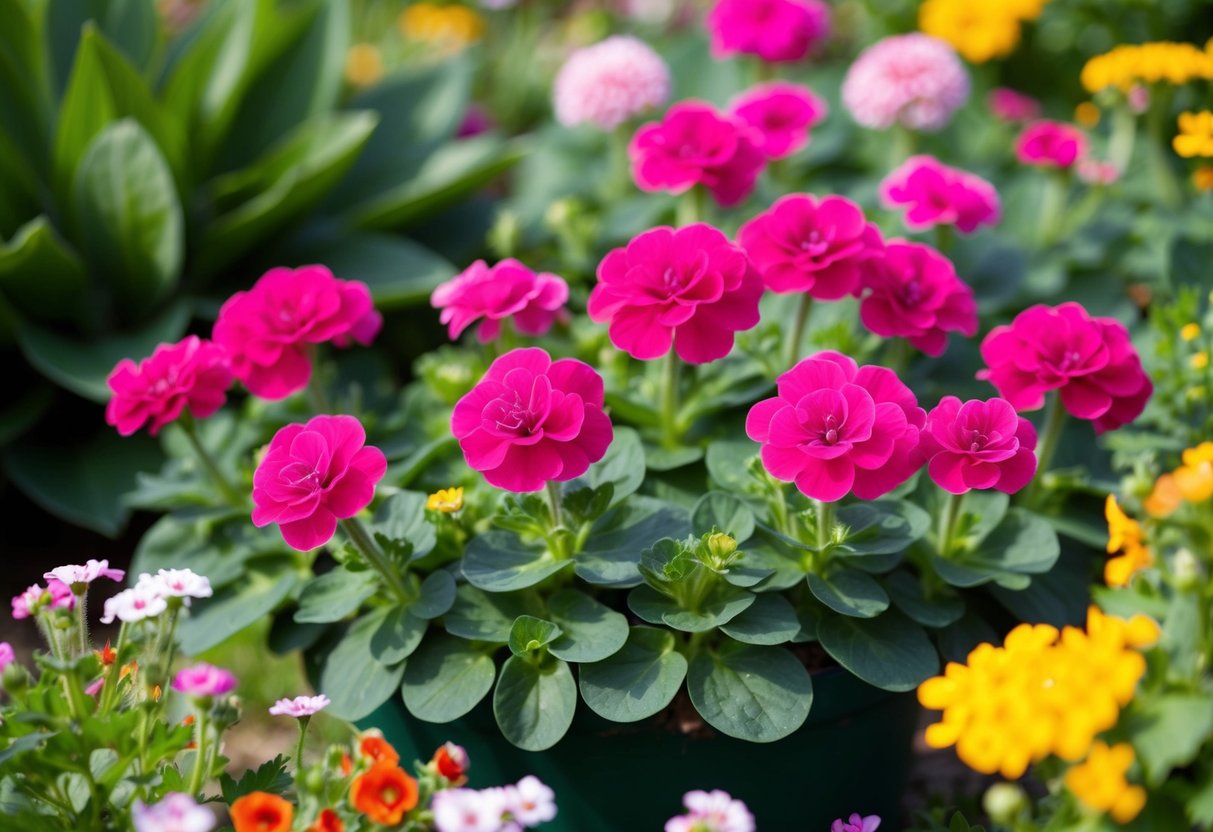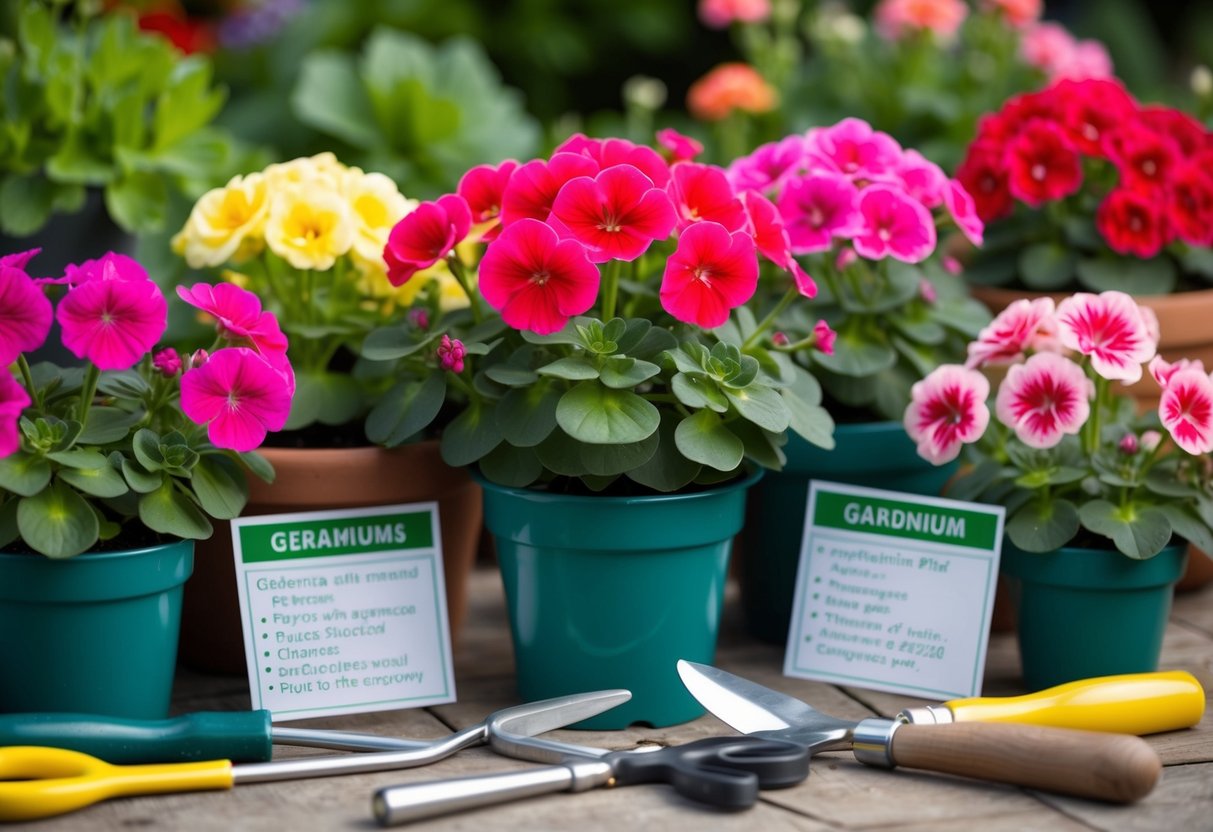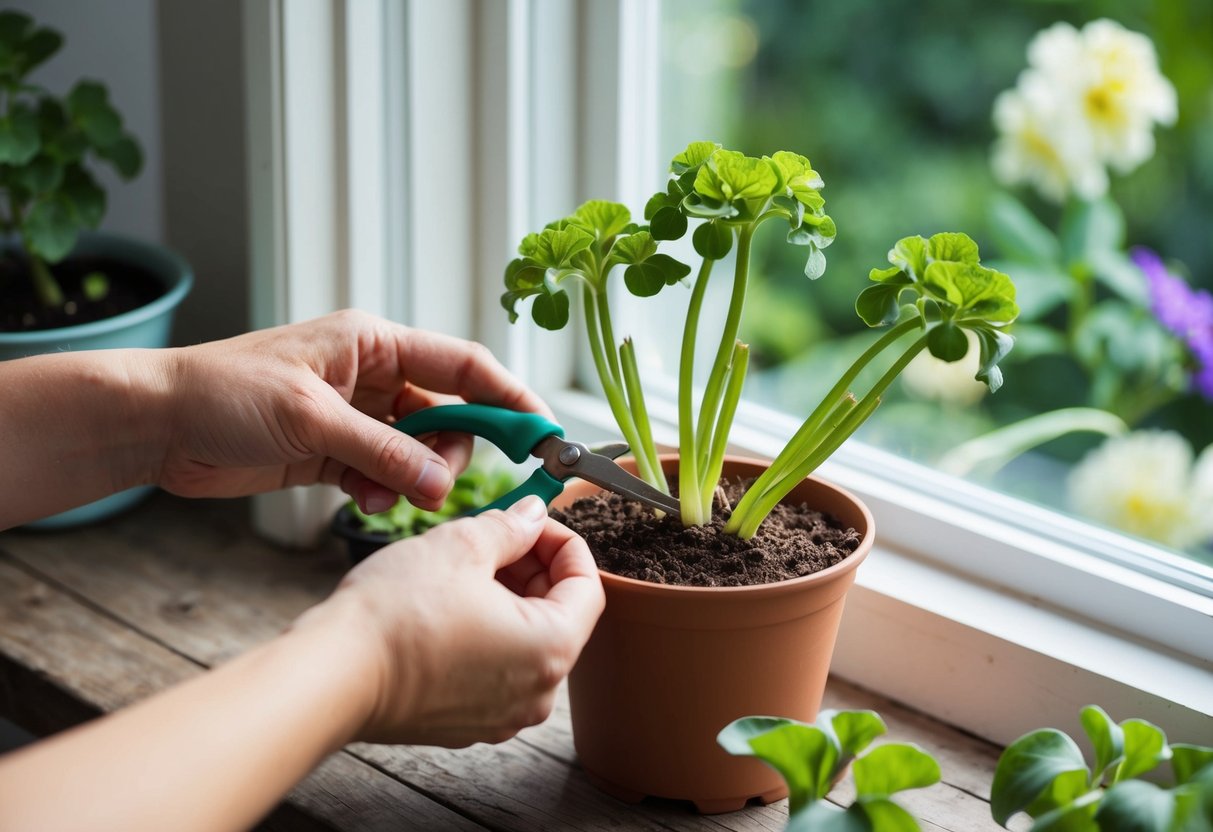Will My Geraniums Come Back This Year? Tips for a Colorful Bloom
Wondering if your geraniums will come back this year? You’re not alone. Many gardeners are curious about whether these colorful blooms will return after a long winter. Geraniums can behave as annuals or perennials, so the answer isn’t always straightforward. Understanding how to care for them is key to seeing them thrive each year.

One important factor is how you manage their care during colder months. For instance, overwintering geraniums is a popular technique to keep them alive through the winter. By bringing them indoors and providing the right conditions, such as a sunny window and reduced watering, you can help these plants survive the off-season. This way, you increase the chances of your geraniums bursting back into bloom once the weather warms up.
For those living in warmer climates or who don’t mind a bit of effort, geraniums can indeed come back year after year. Consider if your geraniums are annuals, which typically last one season, or perennials, which can survive multiple seasons with the right care. Providing well-draining soil and occasional pruning might just give these vibrant flowers the boost they need to reappear in your garden.
Understanding Geranium Types and Hardiness

Geraniums are popular for their vibrant blooms and ease of care, but knowing whether they return each year depends on their type and climate. Understanding the differences between geranium types and their hardiness is key.
Annual vs. Perennial Geraniums
Geraniums come in two main categories: annual and perennial. Annual geraniums, often labeled as zonal geraniums or the more specific Pelargonium species, are not cold-hardy and usually don’t survive winter. These are usually grown in warmer areas or treated as annuals in colder climates.
Perennial geraniums, sometimes called hardy geraniums, can survive winter and return each year. They are better suited for varying climates, especially in zones that experience frost. In your garden, they can thrive year after year, requiring less replanting.
Pelargoniums and True Geraniums
When gardeners refer to geraniums, they often mean Pelargoniums. These include ivy geraniums, zonal geraniums, and scented geraniums. Although not true geraniums, these plants are tender perennials, thriving in USDA Zones 10 and 11.
True geraniums belong to a different genus. They are often known as cranesbills and are true perennials. They are more adaptable to colder regions, handling various weather conditions better than pelargoniums.
Climate and Hardiness Zones
Climate plays a significant role in determining whether your geraniums will return. Geraniums labeled as tender perennials may survive your garden if you live in hardiness zones that match their needs. In colder areas, geraniums may need protection or indoor overwintering.
Refer to your zone when planting. In warm climates, geraniums can grow year-round outdoors. If your area experiences frost, choose hardy geraniums or plan to move pelargoniums indoors during the cold months. This ensures you get the beautiful blooms you love each year without starting from scratch.
Overwintering Geraniums Successfully

Overwintering geraniums can help them thrive for another year, ensuring those lovely blooms return. By preparing properly and choosing the right method, you can store your geraniums effectively, even when they are not actively growing.
Preparation for Overwintering
Before you bring your geraniums indoors for the winter, it’s important to prepare them. Start by trimming your plants. Remove dead leaves and flowers. This helps prevent any diseases from spreading during winter. Gently shower your plants with water to rid them of any pests.
Select a suitable storage area for your geraniums. A cool, frost-free space is ideal. You want the temperature to be around 45-50°F (7-10°C). This helps your plants enter a dormant phase. Ensure the space is dry to avoid mold growth.
Check the roots of your plants. If you see any signs of rot, cut those parts away. Healthy roots are essential for successful overwintering.
Methods of Overwintering
There are several ways to overwinter geraniums. Bringing them indoors to grow in a sunny window is one option. This method keeps them green and lively. Ensure they receive enough light.
Another option is to let them go dormant in their pots. Store them in a cool, dark spot where they won’t freeze. For bare-root storage, remove the plants from soil and hang them upside down in a dry area. This method works well if space is tight.
Taking cuttings is yet another method. Plant the cuttings in fresh soil and place them in a bright location. This ensures fresh growth when spring arrives.
Caring for Dormant Geraniums
While your geraniums rest, they will need minimal care. Check your plants occasionally for any signs of mold or rot. Remove any affected parts right away. This keeps your geraniums healthy throughout the dormant season.
Watering dormant plants is also important. Keep the soil barely moist. Too much water can cause root rot. Conversely, if you are storing them bare-root, mist them lightly occasionally to prevent drying out.
As spring approaches, gradually reintroduce light and warmth to wake your geraniums. Slowly increase watering and start feeding them with a balanced fertilizer to encourage new growth.
Proper Care Techniques for Thriving Geraniums

When caring for geraniums, attention to watering, feeding, pruning, and light conditions is crucial. These techniques ensure your geraniums are healthy and continue to bloom beautifully.
Watering and Feeding
Geraniums need consistent watering, but the soil should not be soggy. You should water your geraniums when the top inch of soil feels dry. Using well-draining soil is important to prevent water from sitting around the roots and causing rot.
For feeding, apply a balanced liquid fertilizer every four to six weeks. This helps promote vibrant blooms and sturdy growth. If you have potted geraniums, be sure to check for dryness more frequently, as they tend to dry out faster.
Pruning and Deadheading
Pruning involves cutting back about a third of the plant’s growth. This step encourages bushier growth. Use clean, sharp tools to prevent disease spread. Regular trimming keeps your geraniums in shape and can prevent them from becoming leggy.
Deadheading involves removing spent blooms. This not only keeps your plant looking tidy but also encourages more flowers to grow. Be sure to remove the flower stalks down to the main stem for the best results.
Optimizing Light and Humidity
Geraniums thrive in bright, indirect light. They can tolerate some direct light, but too much intense sun can stress the plant. Aim for at least six hours of sunlight a day. For indoor geraniums, a sunny windowsill is ideal.
Regarding humidity, geraniums prefer environments that are not too humid. They do best with average indoor levels. If you live in a particularly humid area, ensure good air circulation around your plants. Proper spacing helps prevent moisture buildup on leaves, which can cause problems.
Propagation and Growing Geraniums from Cuttings

Growing new geraniums from cuttings is a simple yet rewarding process. You can create beautiful, thriving plants without needing seeds. This method involves taking cuttings, preparing them properly, and ensuring they develop strong roots.
Taking and Preparing Cuttings
To start, choose a healthy part of your plant. Use a clean knife to cut a stem about 3-4 inches long. Make sure to cut just above a leaf node. Trim the cutting to just below the node to encourage root growth.
If you decide to use rooting hormone, dip the cut end into it before planting. This can help speed up the rooting process but isn’t necessary. Avoid crushing the stem when cutting, as it can damage the plant. For miniature varieties, select shorter cuttings of about 1.5-2 inches.
Rooting and Potting New Geraniums
Place your geranium cuttings in a glass of clean water and ensure the water level doesn’t touch the leaves. Put the glass on a sunny windowsill. Change the water every day to keep it fresh and encourage the roots to form.
Once the roots are visible, plant the cutting in a small pot filled with well-draining potting mix. Ensure there’s proper drainage to prevent waterlogging. You can use a sandy mix for good results. Avoid overly wet conditions, as it may cause root rot. Keep your newly potted geraniums in a spot with indirect sunlight until they establish firmly.
Common Problems and Solutions for Geraniums

Geraniums are popular for their vibrant blooms and are generally easy to take care of. However, they can face issues like pests, diseases, and root rot. Understanding these problems and knowing how to manage them can help your geraniums thrive.
Addressing Pests and Diseases
Geraniums can be attacked by pests like aphids, spider mites, and whiteflies. These insects can suck the sap from leaves and weaken your plants. You might notice small insects or sticky residue on the leaves.
To manage these pests, use insecticidal soap or neem oil. Both options are effective and safe. You can also encourage natural predators, like ladybugs, to keep pest populations in check.
Diseases such as bacterial blight and leaf spot can affect geraniums. Keep your garden tools clean and remove infected leaves to prevent the spread of illness. In severe cases, a fungicide may be necessary. Make sure not to water from above to keep leaves dry.
Preventing and Treating Root Rot
Root rot is a serious issue for geraniums and is usually caused by overwatering. The plant’s roots become brown and mushy, and the plant wilts despite having damp soil.
To prevent root rot, ensure your geraniums have well-draining soil. Avoid letting your plants sit in water. Always adjust watering to reflect the current temperature and humidity.
If you suspect root rot, act quickly. Remove the plant from its pot and inspect the roots. Cut away any affected roots. Repot the plant into fresh soil and a clean pot, ensuring good drainage.
Managing Indoor Geranium Challenges
Indoor geraniums need specific conditions to thrive. They need plenty of sunlight and well-draining soil. Place your plants near a south-facing window. Keep indoor temperatures consistent and avoid cold drafts.
Overwintering techniques can be important for indoor plants in colder climates. You might need to move your geraniums to a slightly warmer spot during the winter months.
Pay attention to humidity levels. Indoor air can be dry, especially in winter. Mist your geraniums occasionally or place a small humidifier nearby to maintain moisture. Be cautious not to overwater, as this can cause root rot.







